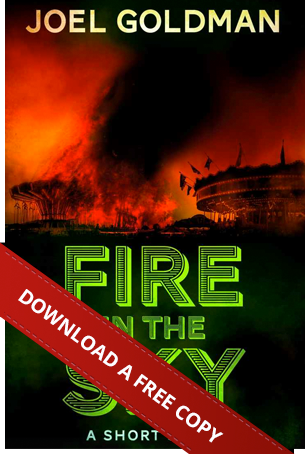 Any reader of crime fiction routinely asks themself the question: who dunnit? The challenging of unraveling the mystery and figuring out the culprit makes reading these thrillers so much fun. But, equally significant, readers should ask: where did it happen? The scene of the crime, or the setting, can play a major role in the mystery genre. Setting includes more than just place but also the time—carefully chosen descriptive details enrich the story and can even provide clues to solving the crime.
Any reader of crime fiction routinely asks themself the question: who dunnit? The challenging of unraveling the mystery and figuring out the culprit makes reading these thrillers so much fun. But, equally significant, readers should ask: where did it happen? The scene of the crime, or the setting, can play a major role in the mystery genre. Setting includes more than just place but also the time—carefully chosen descriptive details enrich the story and can even provide clues to solving the crime.
The Scene of the Crime
Paying attention to where and when a crime takes place establishes its historical, geographical, and physical context. A crime committed on a tropical island or at a crowded party in an isolated mansion would play out much differently then the same incident on the mean streets of Kansas City. I just happen to set most of my stories in and around Kansas City and its courthouses because, as a former trial attorney from Jackson County, I know this world well. If you’ve read any of my books, you know that Kansas City functions almost as a character in and of itself. The setting is more than just background noise; the city influences the characters and even works to advance the plot.
When a story takes place factors into the overall reading experience as well, especially in crime fiction. A mystery novel set during the French Revolution or during prohibition in the American roaring twenties would read completely differently than, say, an apocalyptic or futuristic fantasy tale. If you’re new to reading the genre, keep your eyes open for clues that the setting may reveal. If you’re new to writing, then make certain that you know your setting inside and out. If you don’t, and write about it anyway, those who do know the setting will call you out. That’s never fun.
Difference Between Good and Great Crime Fiction
A good crime fiction author describes the setting and each scene in enough detail so that the reader can form an image of it in his or her mind. It’s important that the reader can visualize the surroundings and overall character of the setting in any genre, but it’s imperative with crime fiction. Without this element in place, crime fiction gets sent right to death row by a bored and confused one-man judge and jury – the reader.
 A great crime book author gives the setting a pulse. That is, the reader can almost smell the rain on hot pavement; hear the hustle and bustle of the city at rush hour; feel the oppressive humidity on a hot summer day; or become acutely aware of potential dangers in a dark alley on the wrong side of town. The settings and scene descriptions in great crime fiction truly bring the story to life for the reader, imparting both concrete and implied clues about surroundings and events.
A great crime book author gives the setting a pulse. That is, the reader can almost smell the rain on hot pavement; hear the hustle and bustle of the city at rush hour; feel the oppressive humidity on a hot summer day; or become acutely aware of potential dangers in a dark alley on the wrong side of town. The settings and scene descriptions in great crime fiction truly bring the story to life for the reader, imparting both concrete and implied clues about surroundings and events.
A setting with a heartbeat represents the difference between good and great crime fiction; and allows readers to develop a true attachment to protagonists and, yes, a deep-seated fear and loathing of the villain. But, the contrary can also be true. A lively and enchanting setting may make readers sympathize, or, even genuinely like the perpetrator of the crime.
Do you notice the nuances of the settings in books you read? If you’re an aspiring writer, or even an accomplished author, perhaps you’d like to write a few lines and set up a setting below for discussion. Share your thoughts with me. Don’t worry—it’s not a set up.
Photo credits: Skyfall movie set images, 51minds [dot] com











